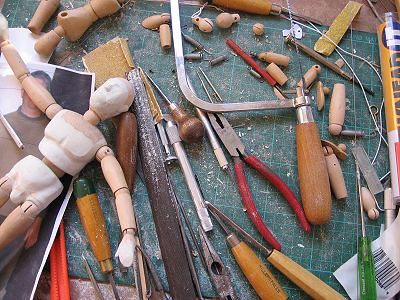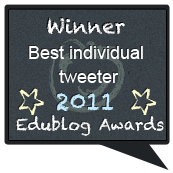 YouTube, believe it or not, is one of the best resources out there for teachers and students. While there is some questionable and objectionable content posted, there is a plethora of great videos on a wide range of topics. John Costilla over at the Classroom 2.0 Ning compiled a list of the 100 best YouTube videos for use in the classroom. The list is organized by subject area and topic so it is very easy to use. Here are my favorites from the list...
YouTube, believe it or not, is one of the best resources out there for teachers and students. While there is some questionable and objectionable content posted, there is a plethora of great videos on a wide range of topics. John Costilla over at the Classroom 2.0 Ning compiled a list of the 100 best YouTube videos for use in the classroom. The list is organized by subject area and topic so it is very easy to use. Here are my favorites from the list...First, one that is not on the list but should be is the Shift 3.0 video about why we need technology in education. I believe it is so important I have put it here for you to watch...
History
Learn History: This YouTube channel provides loads of videos on historical events related to crime and punishment and the American west.
Computer History: Technology is a big deal these days, and students can learn about where it all started by watching this video.
Science
Theory of Everything: Here you’ll find an explanation of the Theory of Everything.
Classification Rap: What better way to remember the categories of classification than to create a rap? Students will enjoy this catchy song.
English/Language Arts
Language Learning and Web 2.0: Watch this to learn how you can use technology to improve your language classes.
Grammar Rock: Who doesn’t love those old Schoolhouse Rock videos? Play these for your kids when they’re learning about elements of grammar, including this one on verbs.
Art
Art Education 2.0: This video gives educators an introduction to Art Education 2.0, an online community on ning.com.
Inspiration In Education
Teachers Make a Difference: This video tells an inspirational story about how a teacher made a difference in a student’s life.
Thank You, Teacher: Here you’ll hear the story of how a simple thank you from a student made a difference in a teacher’s life.
Classroom Management
Tips and Tricks for Classroom Management: Get some basic tips and tricks on keeping your classroom running smoothly in this video.
Positive Learning Places: Here you’ll get advice on several aspects of classroom management and how you can create an environment conducive to learning.
Technology (This section is really the best....of course I am a little bias...)
Podcasting for Teachers: Learn how to create your own podcast in this informative series. This video covers one of the first steps: getting your own blog.
Pay Attention: Don’t think technology is important in your classroom? This video might change your mind.
Humor
Teachers Suck: While somewhat vulgar, this Tom Green rap can be entertaining to see how some students might view education.
Welcome to My Home: Old videos have been paired with new commentary in this funny series.
This list has tons more to explore to head on over to the Classroom 2.0 Ning and check it out. Oh, and if you aren't a member, join the conversation!
Top 100 YouTube Videos For The Classroom
P.S....How is that summer assignment coming along. I would love to hear your thoughts. If you have no idea what I am talking about, read the post here.


















